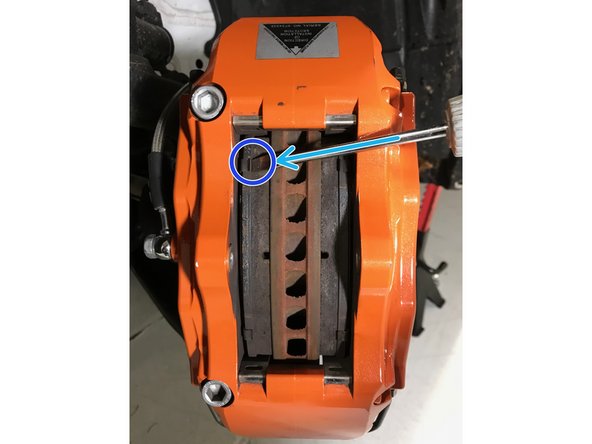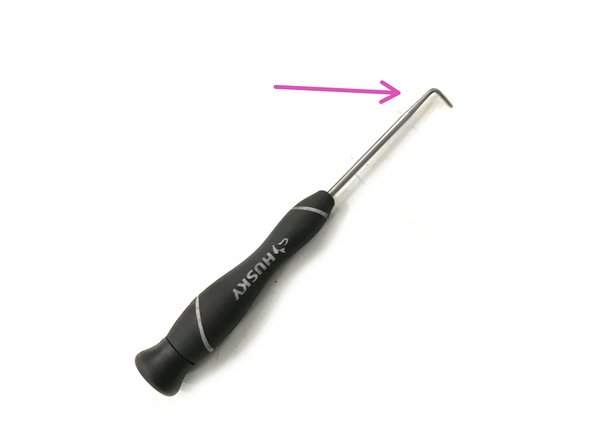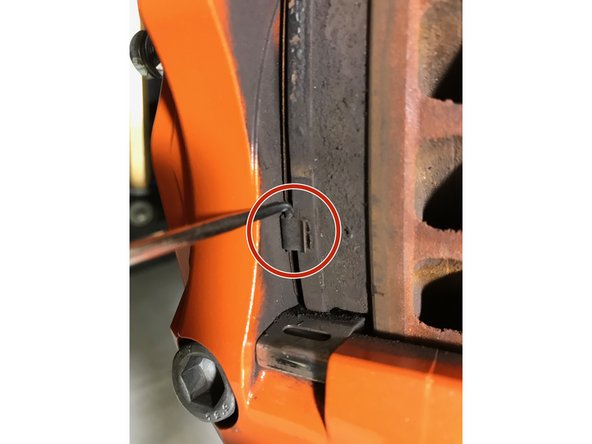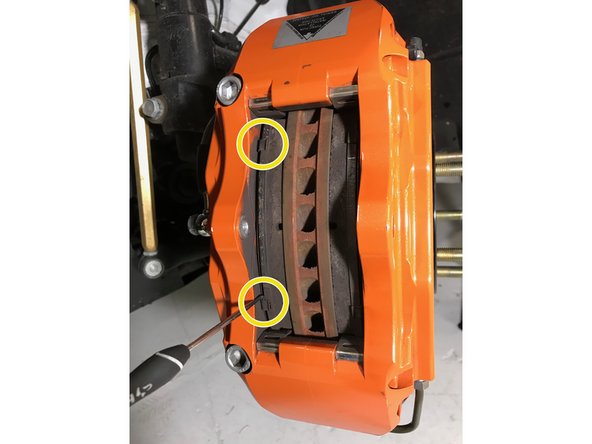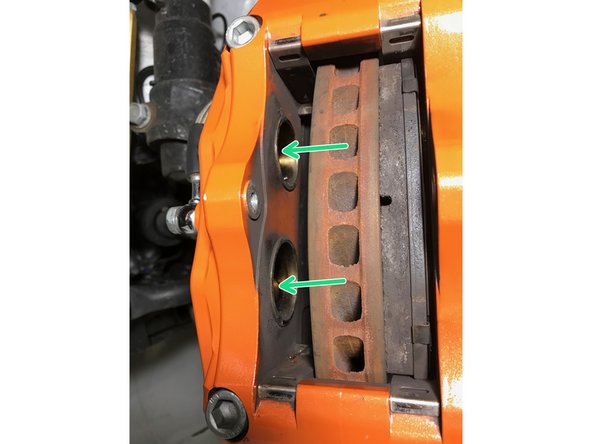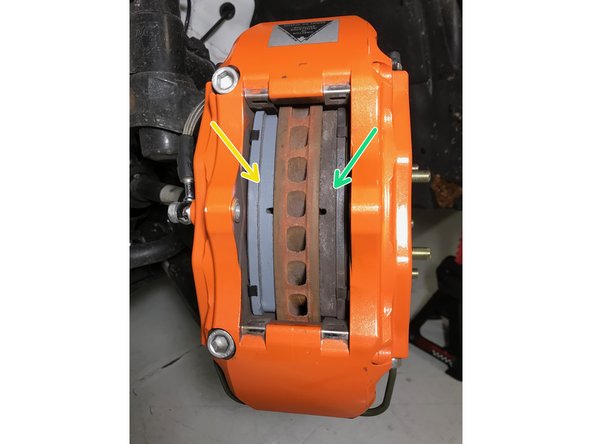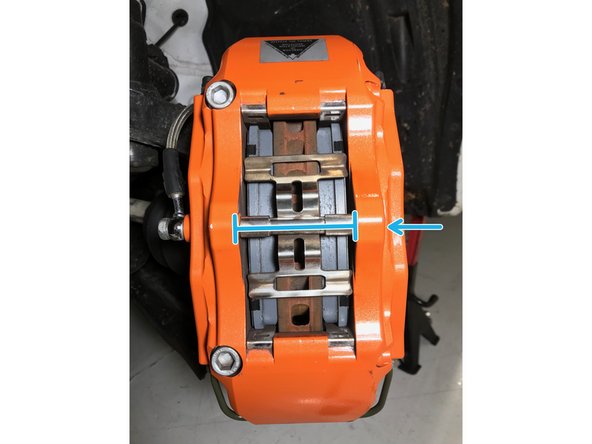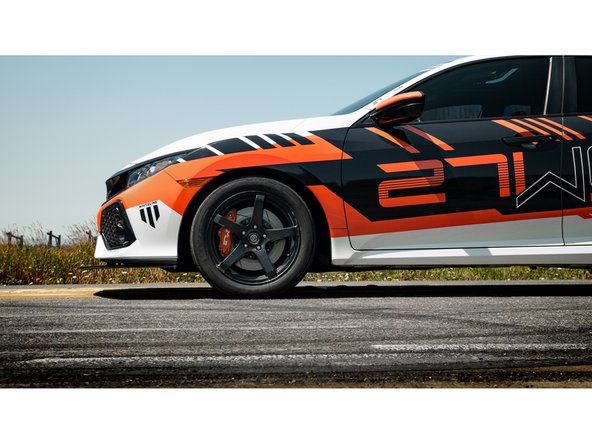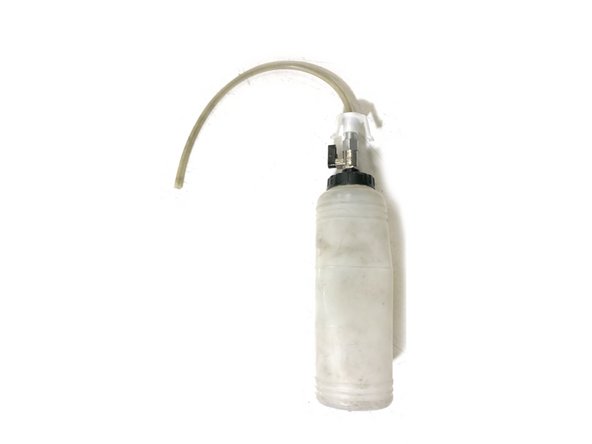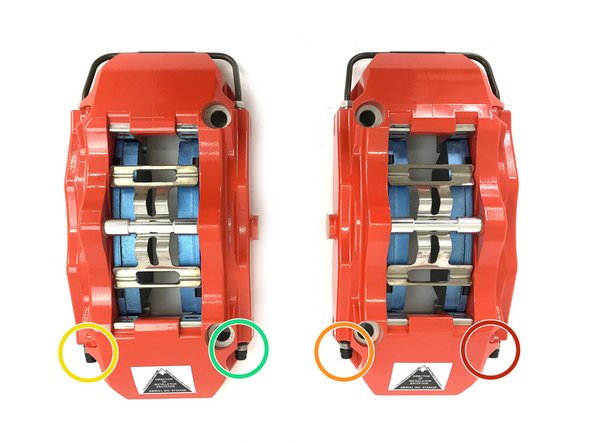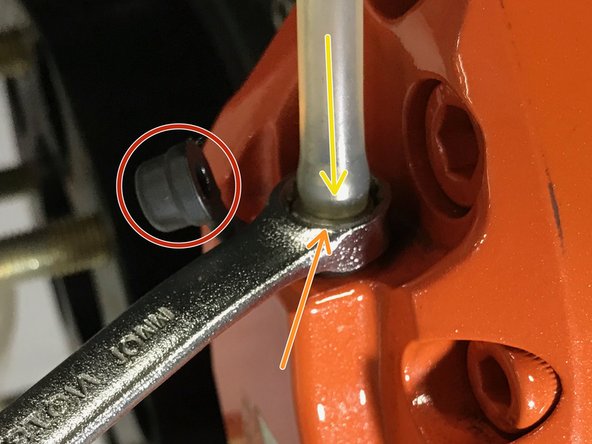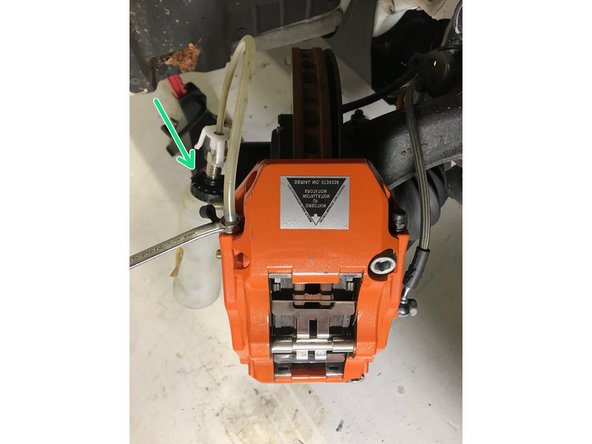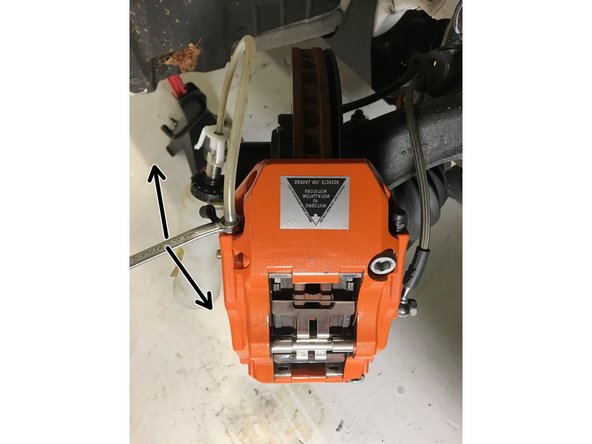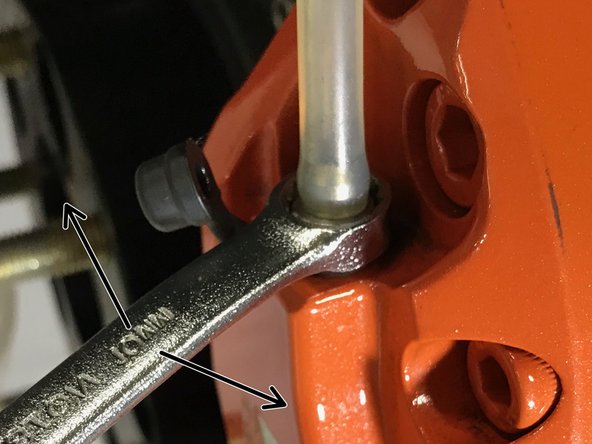Introduction
In this installation guide we have provided step by step instructions to replace the front brake pads for the 27WON Performance Big Brake Kit.
Advisory:
- Working under the vehicle requires a safe and sturdy location for the vehicle to sit on jackstands.
- The brake rotors can be hot after recent vehicle operation. Allow the vehicle to cool or use a fan to cool the brake rotors before working on the vehicle.
-
-
First and foremost; THANK YOU for being a part of the 27WON Family
-
Provided brake pads are for spirited street and light track use. For heavy track use, different pads are required. See next step for recommendations
-
This guide starts at the caliper. For help getting the caliper off and on you can refer to our BBK installation instructions
-
-
Replacement of pads in 27WON BBK typically does not require removal of the calipers
-
-
-
All braking systems are a compromise of Performance, Dust, and Noise. These factors are all highly dependent on the brake pad material used
-
The 27WON BBK arrived to your door with a brake pad material we found to be a good compromise of the above three factors. The pad material is considered a "street sport" setup that will provide a low amount of dust, nearly zero noise (some noise if very cold), and good performance for most street driven applications
-
The 27WON BBK is designed around a very common pad size and shape. If desired you may seek out a brake pad compound that better suits your driving style and application
-
Brake Pad Options by Manufacturer - There are many more options available than shown
-
Hawk - HB110
-
Carbotech - CTCP3215
-
G-Loc - GPX6
-
-
-
Using a 5mm Allen wrench, remove the caliper bridge bolt
-
While loosening the bolt, push on the bridge spacer towards the rotor then remove the bolt
-
Remove bridge spacer and spring clip
-
Using a flathead screwdriver, push the brake pad away from the rotor as shown to provide clearance
-
Typically the brake pad backer plate has a small edge that can be pushed against
-
Locate the 90 degree pick tool for the next step
-
-
-
Using a 90deg pick tool, hook the pick on the backer plate of the brake pad then remove brake pad
-
Pull the top and bottom of the brake pad in even increments until the pad can be fully removed
-
With the brake pad removed you can now access the caliper pistons directly - you will need to fully press the pistons into the caliper to provide clearance for new brake pads
-
Sometimes while pressing one piston in, another piston will push out. If necessary, hold the other pistons in place while pressing a piston into the caliper
-
-
-
Install the new brake pad into the caliper as shown
-
Verify the brake pad material surface is towards the rotor face and the backer plate is towards the pistons
-
Repeat previous steps for the other pad
-
Re-install the brake pad spring clip and the caliper bridge spacer - hand thread the caliper bridge bolt and torque to 8-10 ft-lbs
-
Repeat brake pad replacement for the other caliper
-
-
-
Brake pads can be replaced without opening up the fluid system. It may not be necessary to bleed the brake system after pad replacement. If necessary, we include some instructions for this later in this guide
-
If the brakes are properly bled the brake pedal should have distinct "feel" to it
-
Brake pedal should have minimal down travel before pressure/force is felt
-
Brake pedal should feel firm after a small amount of down travel - it should not feel "spongy" or loose pressure over a quick amount of time
-
If your brake pedal does not correlate with the above, then go through the brake bleeding procedure
-
-
-
Brake pad bedding is an essential process to the life and durability of the brake pads and rotors - for optimal BBK performance please follow the steps below
-
Proper pad bedding slowly heats and cools the rotors & pads - do not hard brake during initial driving until after complete bedding procedure is complete
-
Find an open road and accelerate to 30mph - Brake evenly and smoothly at ~50% effort until the vehicle is almost stopped, then accelerate to 30mph again
-
Repeat above step 8-10 times
-
Find an open road and accelerate to 50mph - Brake evenly and smoothly at ~80% effort until the vehicle is almost stopped, then accelerate to 50mph again
-
Repeat above step 2-3 times
-
Allow ~15min for brakes to cool - You can now use the brakes for normal driving
-
-
-
This completes the installation of your 27WON Brake Pads for BBK
-
We hope you were impressed with your 27WON experience and love your BBK for years to come. Email us at sales@27won.com or call us at 571-271-0271 with any questions or concerns
-
Please Leave a review here: https://store.27won.com/bbk-replacement-...
-
Share your experience using #27WON on Instagram and Facebook
-
Proceed to the next step for the details on bleeding the brakes, if necessary
-
-
-
Both Left Hand and Right Hand BBK Systems must be installed completely before proceeding to the Brake Bleeding Procedure
-
Clean all brakeline connections at chassis and caliper with brake clean spray and clean rag
-
Tools - You will need a fresh container of Dot 4 Brake Fluid, bleeder bottle and hose as shown (the hose should fit tight on the bleeder screw), 10mm box-end wrench, and a friend to help with the process
-
For best results, always start with the bleed screw located the furthest away from the master cylinder and work your way closer. There are two bleed screws for each caliper. Follow the order below
-
First Bleed Screw - RH Outside
-
Second Bleed Screw - RH Inside
-
Third Bleed Screw - LH Outside
-
Last Bleed Screw - LH Inside
-
-
-
Remove the cap from the bleed screw as shown
-
Place the box end of the wrench over the bleed screw hex as shown
-
Put one end of the hose on the bleed screw as shown
-
Hang bottle from wheel studs as shown or set on ground
-
Have yourself or your friend setup in the driver's seat so that they can press the brake pedal firmly
-
Have the other person setup at the brake caliper so they can open/close the bleed screw
-
To open/close the bleed screw - you only need to turn the wrench ~1/4 turn
-
-
-
Have the person in the driver's seat press the brake pedal 3-5 times until there is sufficient pedal pressure. Then, have them hold the brake pedal firmly as the bleed screw is loosened. The pedal will go to the floor while fluid and air will enter the bottle. Make sure your friend holds the pedal down as you retighten the bleed screw.
-
The brake pedal will go to the floor while fluid and air will be pushed through the open bleed screw
-
Continue holding the brake pedal down until the bleed screw is re-tightened/closed
-
Repeat the above procedure around 3-5 times per bleed screw, or until your are confident there is no air in the system Check that your brake fluid level is at “full” after each bleed screw.
-
After each bleed screw is completed, check that your brake fluid level is at “full”. Refill as needed
-
Move to the next bleed screw until all four bleed screws have been completed
-
Once brake bleeding is complete, inspect all brakeline connections at chassis and caliper to verify there are no leaks
-




